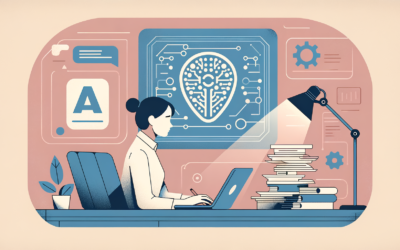Why Focusing on the Big Picture is Key to Unlocking AI and Automation’s Full Potential
AI and automation tools promise efficiency, but without systems thinking, their benefits remain fragmented. By shifting from a task-centric approach to a holistic process mindset, organizations can overcome operational silos and rediscover true productivity.
📜 Topics included in this post
- The limitations of task-centric thinking in modern workplaces
- How context-switching undermines productivity
- The role of systems thinking in unifying organizational processes
- How generative AI enhances end-to-end workflow automation
- The importance of governance and adaptability in AI-driven transformation
Access the full article by clicking the button below…
The Need for Systems Thinking in the Age of AI
Today’s organizations are drowning in apps, each designed to solve specific tasks. While these tools enhance individual processes, they often lead to fragmentation and context-switching, reducing overall productivity. The average employee spends nearly 10 minutes transitioning between apps, creating fatigue and inefficiency.
Moving Beyond the Task Mindset
The task-oriented approach, a legacy of the Industrial Revolution, focuses on isolated functions rather than cohesive workflows. In contrast, systems thinking views organizations as interconnected ecosystems. By adopting this perspective, businesses can streamline operations, eliminate redundancies, and foster collaboration.
Generative AI: A Catalyst for Unified Processes
Generative AI tools like ChatGPT and advanced Large Language Models (LLMs) offer unprecedented potential to integrate and orchestrate complex systems. These tools can:
- Automate cross-functional workflows
- Provide real-time insights and decision support
- Connect disparate tools and data sources
For instance, AI can design workflows that eliminate silos, enabling seamless collaboration across departments. A chatbot powered by generative AI can serve as a unified interface, reducing the need for constant app-switching and manual interventions.
The Role of Checklists in Process Thinking
Borrowing lessons from aviation and healthcare, checklists provide a reliable framework for consistency. In business, operational checklists evolve into automated workflows, ensuring tasks are completed accurately and efficiently every time.
Real-World Applications
Consider a customer service workflow: Generative AI can integrate CRM systems with communication platforms, enabling support agents to address issues without toggling between apps. Similarly, automated onboarding processes ensure smooth transitions for new employees, enhancing retention and satisfaction.
Governance and Adaptability in the AI Era
As organizations adopt generative AI, strong governance is essential to ensure ethical use, data security, and consistent outputs. Additionally, adaptability is critical in a rapidly changing market. Businesses must continuously refine their workflows to stay competitive.
Conclusion: Rediscovering Productivity
Automation and AI are not just about saving time—they’re about transforming how we work by bringing the big picture into focus. By adopting systems thinking and leveraging generative AI for end-to-end process management, organizations can achieve new levels of productivity, collaboration, and innovation.
To learn more about leveraging AI and creativity in your projects, explore these courses:
3 AI business ideas related to this topic
|
Check out 3 interesting AI business ideas to make money with it.
|
A Conspiratorial Analysis of AI 🕵️
|
Discover a crazy conspiracy theory created by AI on this topic.
|
Learn more about this subject with the in-depth prompt
|
Use AI to learn more about the topic? Just copy and paste the prompt below into ChatGPT or another AI of your choice.
|
3 AI Jokes about this topic 🤣
|
Time to laugh! Check out below 3 bad jokes that AI created about this topic.
|
Below are some AI images on this topic that were automatically created by Roblogger.












0 Comments